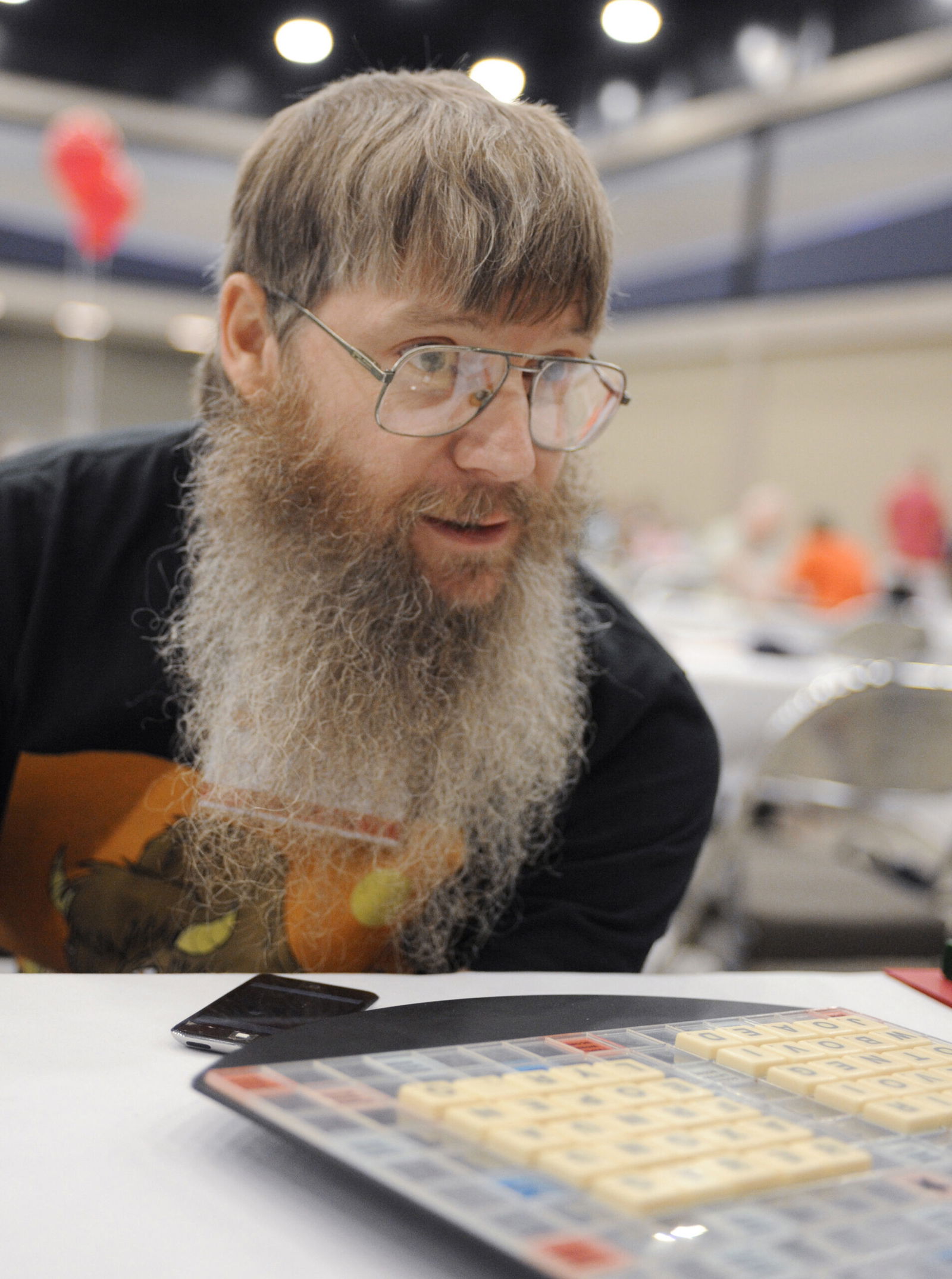Around the World briefs

By Associated Press
A New Zealander studied for a year
to win the Spanish world Scrabble title. He doesn’t speak Spanish
WELLINGTON, New Zealand | A New Zealand man playing his first-ever competitive Scrabble game in Spanish, a language he doesn’t speak, has won the board game’s Spanish-language world title.
Nigel Richards, a professional player who holds five English-language world titles, won the Spanish world Scrabble championships in Granada, Spain, in November, losing one game out of 24.
Richards started memorizing the language’s Scrabble word list a year ago, his friend Liz Fagerlund -– a New Zealand Scrabble official -– told The Associated Press.
“He can’t understand why other people can’t just do the same thing,” she said. “He can look at a block of words together, and once they go into his brain as a picture he can just recall that very easily.”
In second place was defending champion Benjamín Olaizola of Argentina, who won 18 of his games.
Nothing like the New Zealander’s feat had ever happened in Spanish Scrabble, said Alejandro Terenzani, a contest organizer.
“It was impossible to react negatively, you can only be amazed,” Terenzani said. “We certainly expected that he would perform well, but it is perhaps true that he surpassed our expectations.”
Richards has done this before. In 2015, he became the French language Scrabble world champion, despite not speaking French, after studying the word list for nine weeks. He took the French title again in 2018.
Recognized in international Scrabble over his three-decade career as the greatest player of all time, Richards’ Spanish language victory was notable even by his standards, other players said.
While compensating for different tile values in English and Spanish Scrabble, Richards also had to contend with thousands of additional seven, eight and nine letter words in the Spanish language -– which demand a different strategy.
Richards in 2008 was the first player ever to hold the world, U.S. and British titles simultaneously, despite having to “forget” 40,000 English words that do not appear in the American Scrabble word list to triumph in the U.S.
His victories are legendary in the Scrabble community, and games analyzed in YouTube videos watched by tens of thousands.
Scrabble does not require players to know the definitions of words, only what combinations of letters are allowed in a country’s version of the game, but native speakers have “a huge leg up,” American Scrabble player Will Anderson said in a video summarizing Richards’ Spanish win.
Richards’ mother, Adrienne Fischer, told a New Zealand newspaper in 2010 that he did not excel at English in school, never attended university and took a mathematical approach to the game rather than a linguistic one.
“I don’t think he’s ever read a book, apart from the dictionary,” she said.
Fagerlund said Richards impressed her when he arrived at his first Scrabble club meeting at age 28. Two years later, in 1997, he cycled 220 miles (350 kilometers) from Christchurch to the city of Dunedin, won the New Zealand title on his first attempt and cycled home again.
At the Spanish event he was shy and modest, organizer Terenzani said, but happily posed for photos and spoke with fans who approached him.
“Although he did so in English, of course,” Terenzani added.
What motivates Richards, who now lives in Malaysia, is a mystery. He never speaks to reporters.
“I get lots of requests from journalists wanting to interview him and he’s not interested,” Fagerlund said. “He doesn’t understand what all the hoo-ha is about.”
Brazilian beef and leather
companies fall short in tackling deforestation, a study finds
BRASILIA, Brazil | The next United Nations climate conference, COP30, will be held in Belem, the capital of an Amazon region where widespread deforestation mainly driven by cattle farming has turned the surrounding rainforest from a vital carbon sink into a significant carbon source.
Now a new report concludes around 80% of Brazil’s leading beef and cow leather companies and their financiers have made no commitments to stop deforestation.
The study, released Wednesday by the environmental nonprofit group Global Canopy, highlights the country´s most influential beef and leather producers and processors along with financial institutions that have supported them with $100 billion. This amount is one-third of the annual funding that wealthy nations pledged to provide for climate finance in developing countries during COP29 last month in Baku, Azerbaijan.
“Although cattle is the single most influential commodity for deforestation and linked greenhouse gas emissions, the report … reveals a picture of staggering inaction from corporates and financial institutions alike in Brazilian supply chains,” the study said.
The record is poor even among companies that commit to halting deforestation, such as JBS, according to the report. The giant meatpacker is one of the few to make such commitments and one of only two to have a system for tracing cattle all the way to the production unit. Yet the report ranks the company as the most likely to be buying cattle and cow leather from recently deforested land.
This assessment of deforestation risk is based on the number of cattle bought from ranchers in each Brazilian municipality and its deforestation rate. Meatpackers buying from high-deforestation areas are more likely to source from recently cleared land than those buying from low-deforestation areas. The methodology was created by Do Pasto ao Prato, an independent Brazilian consumer app that aims to increase transparency in the livestock sector.
“Commitments are critical as one of the first steps a company takes to address deforestation,” Emma Thomson, one of the coauthors, told The Associated Press. “But it has to be followed by effective implementation and by monitoring suppliers and indirect suppliers for compliance with those standards. It has to have effective traceability mechanisms and transparent reporting on the progress that is — or isn´t — being made.”
Besides JBS, the report lists three processing companies with units based in Para state as likely to be buying cattle and cow leather from recently deforested land: Mercurio, Mafrinorte and Frigol.
In a written response, JBS said the study’s methodology provides a simplistic and inaccurate assessment of deforestation risk, ignoring factors such as corporate policies, sustainable procurement systems and exclusion of noncompliant suppliers.
The company said that since 2009 it has maintained a system to ensure suppliers meet socio-environmental criteria. “The companies that have made significant progress in their controls end up being criticized, and their transparency is used not as an incentive but as a penalty,” it said.
Mercurio, Mafrinorte and Frigol didn´t reply to requests for comment.
Global Canopy´s report was funded by the Bezos Earth Fund. Do Pasto ao Prato is financed by Norway’s International Climate and Forest Initiative.
The state of Para harbors Brazil´s second largest cattle herd, with 25 million animals — and 35% of its territory is cleared, an area slightly smaller than Syria. As a result, it ranks first in greenhouse gas emissions among Brazilian states. A landmark study published in the journal Nature in 2021 found that the eastern Amazon, where Para is located, has ceased to function as a carbon sink, or absorber, for the Earth, due to widespread deforestation and climate change.
Niki Mardas, executive director of Global Canopy, said there will be an update to Wednesday’s baseline report in the runup to COP30 next November, when all eyes will be on the Amazon. “This isn’t a fixed picture. This is a call to action.”
UK spy agency releases annual Christmas card puzzle to
uncover future codebreakers
LONDON | What does a spy agency give for Christmas? How about a riddle wrapped in an enigma inside a mystery.
GCHQ, Britain’s electronic and cyber-intelligence agency, on Wednesday published its annual Christmas Challenge – a seasonal greeting card that doubles as a set of fiendishly difficult puzzles designed to excite young minds about solving cyphers and unearthing clues.
The challenge is aimed at young people aged 11 to 18, who are encouraged to work in teams and use “lateral thinking, ingenuity and perseverance” to crack the seven brainteasers set by GCHQ’s “in-house puzzlers.”
The card is sent by the head of GCHQ — short for Government Communications Headquarters — to other national security chiefs around the world. Puzzles were first included in 2015 and have become an annual tradition. The card can be downloaded from the GCHQ website, and has become popular with teachers – the agency says a third of British secondary schools have downloaded it.
The agency admits the festive fun has an ulterior motive.
GCHQ Director Anne Keast-Butler said she hoped the card would inspire young people to explore STEM subjects – science, technology, engineering and mathematics – “and to consider what a career in cybersecurity and intelligence might have to offer.”
It also aims to dispel some myths about intelligence work, fueled by super-agent James Bond and other fictional spies.
GCHQ’s “chief puzzler,” Colin, said the challenge is best solved by teamwork, in contrast to the popular image of the lone genius or solo secret agent.
“Don’t get me wrong – we have geniuses in the department,” said Colin, who gave only his first name because of the secret nature of his work. “But critically what we have is a large number of people with different skills coming together.
“The skills we want are quite diverse. We like analytical skills but also lateral thinking skills. And we like the idea with some of these puzzles that it involves a certain amount of perseverance to get to the answer.”
The card features a map of the U.K., linked to the locations where GCHQ has bases, including its high-tech headquarters in Cheltenham, western England, nicknamed the doughnut because of its shape.
Many British people are keen puzzle-solvers, and the link between puzzlers and spycraft is often celebrated – notably in the many books, films and TV shows about Bletchley Park, a complex of buildings and wooden huts northwest of London where, during World War II, hundreds of mathematicians, cryptologists, crossword puzzle experts and computer pioneers worked to crack Nazi Germany’s secret codes.
Historians say their work shortened World War II by as much as two years.
Colin said that among new recruits to GCHQ, “we now hear more and more that they first heard of GCHQ through puzzling.”
“It definitely inspires people.”
Technology has advanced immeasurably since the days of Bletchley Park, but — reassuringly — making and solving puzzles is one area that still needs the human touch.
“AI doesn’t have a good record either setting or solving puzzles, not of this sort,” Colin said. “It is still the case that people are able to set interesting puzzles in a way that AI isn’t – thank goodness.”
Authorities say the mystery
disease in Congo might be malaria but more testing is needed
KINSHASA, Congo | The mystery flu-like illness that has killed dozens of people in southwest Congo in recent weeks might be malaria, according to results from laboratory samples of infected people, authorities said Wednesday.
“Of the 12 samples taken, nine were positive for malaria but these samples were not of very good quality, so we are continuing to research to find out if this is an epidemic,” Dr. Jean-Jacques Muyembe, director-general of the National Institute for Biomedical Research in Kinshasa, told The Associated Press.
“But it is very likely that it is malaria because most of the victims are children,” he added.
On Tuesday, the head of the World Health Organization, Tedros Adhanom Ghebreyesus, also said most of the samples tested positive for malaria, but noted it is possible that more than one disease was involved. He said further samples will be collected and tested.
In recent weeks, there were 416 reported cases of the mystery disease and 31 deaths from it in hospitals, WHO director-general said. There were another 44 deaths in the community, Congo’s health minister Roger Kamba said last week.
Most of the cases and deaths are in children under 14 in the remote Panzi health zone in Congo’s western Kwango province, according to the WHO.
Panzi resident Ezekiel Kasongo said his 9-year-old son was just released from the hospital after he fell sick two weeks ago.
“He had a high fever, a headache and was very weak,” Kasongo told the AP. “We were very worried because of the number of deaths, especially among children, but God be praised, he is out.”
The symptoms include fever, headache, cough and anemia. Experts from the National Rapid Response Team and WHO were in Panzi last week to take samples and investigate.
The Panzi health zone, around 435 miles (700 kilometers) from the capital, Kinshasa, is hard to access. The experts took two days to arrive, according to Congo’s health minister.
Because of the lack of local testing capacity, samples had to be taken to Kikwit, more than 500 kilometers away, the head of the National Institute for Public Health, Dieudonne Mwamba, said last week.
Panzi was hit by an epidemic of typhoid fever two years ago, and there is currently a resurgence of seasonal flu across the country, Mwamba added.
The area also has high levels of malnutrition and low vaccination coverage, leaving children vulnerable to a range of diseases including malaria, the head of the WHO said Tuesday.
—From AP reports


